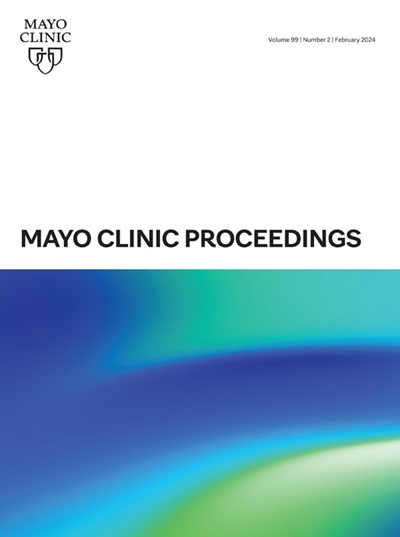肾移植受者对疫苗接种和强化的反应。
IF 6.7
2区 医学
Q1 MEDICINE, GENERAL & INTERNAL
引用次数: 0
摘要
目的:评价Janssen Ad26.COV2异体增强剂(HB)的疗效。在多次接种COVID-19 mRNA疫苗后抗体水平较低的肾移植受者(KTRs)中。患者和方法:这项多中心研究检测了接种两剂或两剂以上mRNA疫苗的ktr患者的抗刺突蛋白抗体水平。入学时间为2022年4月11日至2023年9月19日。低水平(LL, 0.4-250 IU/mL)的肾移植受者给予含有Janssen Ad26.COV2的HB。年代的疫苗。结果:在评估的419个独特KTRs中,80.0% (n=335)为HL, 12.9% (n=54)为LL, 7.2% (n=30)为UL。移植前接种的KTRs均有可检测水平。HB后28天,62.9% (n=22 / 35)的LL患者达到HL。尽管20名UL患者中有9名(45%)达到了LL,但尽管在HB前停用霉酚酸酯,但没有人在28天内达到HL。检测不到的水平与许多亚群中T细胞和B细胞减少以及covid -19特异性记忆B细胞减少有关。结论:大多数KTRs在两次或多次mRNA疫苗接种后产生HL抗刺突蛋白抗体,这是由于疫苗接种前后是否有感染的原因。许多LL患者对HB有反应。没有UL达到HL;可能是由于免疫系统严重受损。在这个KTR人群中,如果在移植前接种疫苗,可以确定潜在的持久抗体反应。最终,监测疫苗接种后的抗体水平可能会确定哪些患者可以从其他预防策略中受益。临床试验:gov NCT05220397。本文章由计算机程序翻译,如有差异,请以英文原文为准。
Responses of Kidney Transplant Recipients to Vaccination and Boosting
Objective
To assess heterologous booster (HB) with Janssen Ad26.COV2.S in kidney transplant recipients (KTRs) with low antibody levels after multiple COVID-19 mRNA vaccinations.
Patients and Methods
This multicenter study examined anti–spike protein antibody levels in KTRs with two or more doses of mRNA vaccinations. Enrollment was from April 11, 2022, to September 19, 2023. Kidney transplant recipients with low levels (LL, 0.4-250 IU/mL) were offered HB with Janssen Ad26.COV2.S vaccine. Those with undetectable levels (UL, <0.4 IU/mL) were randomized to HB with or without immunosuppression adjustment. The primary endpoint was anti–spike protein antibody levels greater than 250 IU/mL (high level [HL]) at 28 days after HB. Subset analysis included lymphocyte, immunoglobulin, and COVID-19–specific T- and B-cell levels.
Results
Of the 419 unique KTRs assessed, 80.0% (n=335) were HL, 12.9% (n=54) were LL, and 7.2% (n=30) were UL. All KTRs vaccinated pretransplantation had detectable levels. Twenty-eight days after HB, 62.9% (n=22 of 35) of patients with LL achieved HL. Although 9 of 20 (45%) patients with UL achieved LL, none achieved HL by 28 days despite mycophenolate mofetil cessation before HB. Undetectable level was associated with fewer T and B cells in many subsets and fewer COVID-19–specific memory B cells.
Conclusion
Most KTRs had HL anti–spike protein antibodies after two or more mRNA vaccinations due to vaccinations with or without prior infection. Many LL patients responded to HB. No UL reached HL; likely due to severely impaired immune system. In this KTR population, a potential durable antibody response was identified if vaccinated before transplantation. Ultimately, monitoring antibody levels after vaccination might identify patients who could benefit from alternative prophylaxis strategies. ClinicalTrials.gov NCT05220397
求助全文
通过发布文献求助,成功后即可免费获取论文全文。
去求助
来源期刊

Mayo Clinic proceedings
医学-医学:内科
CiteScore
16.80
自引率
1.10%
发文量
383
审稿时长
37 days
期刊介绍:
Mayo Clinic Proceedings is a premier peer-reviewed clinical journal in general medicine. Sponsored by Mayo Clinic, it is one of the most widely read and highly cited scientific publications for physicians. Since 1926, Mayo Clinic Proceedings has continuously published articles that focus on clinical medicine and support the professional and educational needs of its readers. The journal welcomes submissions from authors worldwide and includes Nobel-prize-winning research in its content. With an Impact Factor of 8.9, Mayo Clinic Proceedings is ranked #20 out of 167 journals in the Medicine, General and Internal category, placing it in the top 12% of these journals. It invites manuscripts on clinical and laboratory medicine, health care policy and economics, medical education and ethics, and related topics.
 求助内容:
求助内容: 应助结果提醒方式:
应助结果提醒方式:


